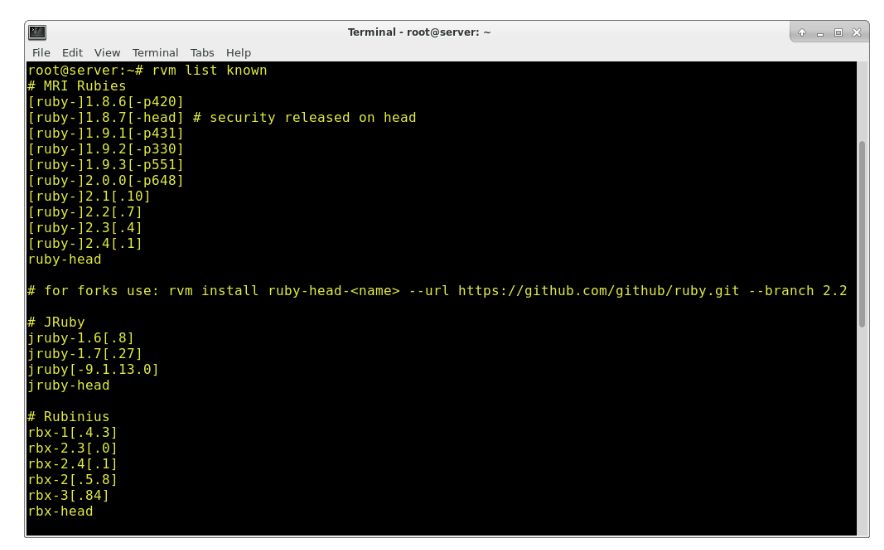In this article we will provide basic steps on how to install Ruby on Rails onto Ubuntu based VPS. Ruby on Rails is one of the most popular web frameworks today, and Ruby is a widely used programming language for developing with it.
Ruby is known among programmers for a terse, uncluttered syntax that doesn’t require a lot of extra punctuation. Compared to Java, Ruby is streamlined, with less code required to create basic structures such as data fields.
Rails is a framework for building websites. As such, Rails establishes conventions for easier collaboration and maintenance.
Preparation
Before you start installing Ruby on Rails, prepare your server for it. Make sure your system is update:
apt-get update && apt-get -y upgrade
Also, you will be required to install Curl at some point, why not at the beginning:
Installation
After that, you will need to install Ruby Version Manager (RVM), which will help to follow newest available Ruby version and install them quicker:
gpg --keyserver hkp://keys.gnupg.net --recv-keys 409B6B1796C275462A1703113804BB82D39DC0E3
cd /tmp && \curl -sSL https://get.rvm.io -o rvm.sh
cat /tmp/rvm.sh | bash -s stable
Before starting to use RVM, you need to execute one more command:
source /usr/local/rvm/scripts/rvm
You can list all available Ruby versions:
You will be presented with a list of available versions, like example below:

You can choose one and install as following:
Once you install Ruby, you can check the version with the following command:
You will see something like:
ruby 2.4.1p111 (2017-03-22 revision 58053) [x86_64-linux]
After Ruby is installed, you may as well proceed with Rails installation:
You can check Rails version at any time as well:
Results should be as following:
Rails 5.1.4
That is, it. You have installed Ruby on Rails. Now you can start your new Rails application:
Starting a new Ruby on Rails project
We will create a new project-specific gemset. When we create the gemset, it will be empty (though it inherits use of all the gems in the global gemset). However, we will be able to install a more specific version of Ruby if needed. As you may understand RVM allows you to use multiple Ruby version with every new project (gemset). We also install Raills as a framework for specific gemset.
Then we will set what version of Ruby will be used:
rvm use ruby-2.4.1@new --ruby-version --create
As well as installing Rails to this specific gemset for your specific application:
After that just start the new project:
That is it, your project (gemset) has been created.